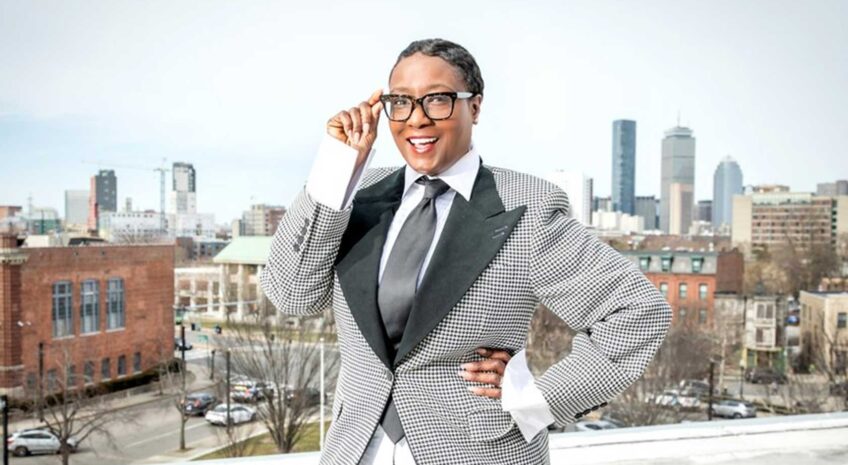Gender equality: Little progress made
Nonprofit slow to increase board and senior executive positions for women

When the likes of Yahoo’s Marissa Mayer and Facebook’s Sheryl Sandberg broke into the upper echelons of corporate America, their rise prompted discussions about how far down their individual successes would trickle. Were they anomalies, or did they symbolize a coming change for women in the business world more broadly?
A similar conversation has been happening in the nonprofit sector for some time — although a recent report on gender diversity in nonprofit leadership from The Boston Club reached a conclusion that the women’s organization found equally parts surprising and disappointing.
“We were surprised to find that little progress has been made in increasing the number of women in board and senior executive positions over the last two years,” wrote Boston Club President Claire Muhm and Chair of the Nonprofit Board Committee Beverly Brown in the report.
“We have grown familiar, but unreconciled, with the slow pace of change in the for-profit sector,” they continued. “Given the higher percentage of women serving on nonprofit boards reported in 2013, we were optimistic that [things would be different]. … Our optimism was apparently misplaced.”
The study shows that the average percentage of women on the state’s largest nonprofit boards increased only 1 percent since the group’s last report in 2013 – from 35 to 36 percent.
And probably not coincidentally, of the 21 organizations that did have at least half of their governing board constituted by women, the top four were women’s colleges — Mount Holyoke, Smith, Simmons and Wellesley.
The study focused on the 150 largest nonprofit organizations in Massachusetts, measured according to revenue, which ranged from $64.5 million to $10.5 billion.
While many people associate the word “nonprofit” with “charity,” this sector also includes large research universities, hospitals, and health care systems. The study noted that of the 150 nonprofits surveyed, 43 percent are health-care related and 32 percent are in education.
The issue of board gender diversity matters not just because of questions of organizational culture and values, but also because these groups are large employers. The organizations included in the study generated $62.7 billion in revenues in 2012 (the most recent available data). One in every six employed persons in Massachusetts works for a nonprofit, according to the report.
National scene
On the national scale, the gender picture appears more equitable, although greater disparities become apparent when nonprofit organizations are split according to type.
“We’re actually pretty good on gender parity for board service in the aggregate,” says Anne Wallestad, CEO of BoardSource, a national organization that focuses on nonprofit governance. She notes that women make up 48 percent of nonprofit boards nationally.
“What is interesting is that changes when you drill down based on the budget size of the organization,” she adds.
BoardSource released a study in January, Leading with Intent, that found that for small organizations (with budgets less than $1 million), the governing boards are 52 percent female; for medium organizations (budgets between $1 and $10 million), the boards are 47 percent female; and for large organizations (budgets $10 million and up), the female make-up of the board drops to 40 percent.
There’s a similar split depending on the kind of organization in question — according to the report, women make up basically half (49 percent) of boards of charitable organizations, whereas they constitute only 41 percent and 42 percent of associations and foundations, respectively.
Wallestad says there could be several reasons for the split — the kinds of organizations that pique women’s interests, the organizations’ outreach efforts, and more — but one thing is clear. “It’s not that women aren’t interested in serving on boards,” she says.
She says the main takeaway from their research has been the importance of intentionality.
“It all goes back to intentional recruitment practices,” she says. “Board diversity doesn’t happen on its own.”
For instance, Leading with Intent noted that nonprofits demonstrated a lack of concerted planning and follow-through to achieve such goals. While organizations reported a high level of discussions about expanding board diversity (74 percent) and active recruitment of diverse candidates (80 percent), only 56 percent of organizations had reviewed and revised their recruiting efforts — and only 19 percent said they had developed a specific action plan to increase diversity.
Some have posited that the gender split may stem from the key duty that nonprofit board members have to fundraise for the organization. This factor might precipitate a male-dominated board, based on the perception that women cannot bring needed financial resources to the table — a belief that could be based on men’s higher earning power on a national scale, differences in the ways that women and men make decisions about institutional giving, or a host of other factors.
The connection between perceived financial prowess and board membership is explored in a new paper from the Stanford Social Innovation Review, The Wall Street Takeover of Nonprofit Boards. It finds that a growing linkage between the finance world and the non-profit sector is contributing to a dearth of board diversity along both racial and gender lines.
“Those concerned about the racial and gender demographics of nonprofit boards should also be alarmed that close to 40 percent of board seats (and an even higher percentage of board leadership positions) are allocated to people from an industry that is not particularly diverse,” writes author Garry Jenkins.
He notes that women made up less than 20 percent of executive and senior level managers in financial industries — and that blacks and Latinos hold about 2 percent each of those high-level positions.
While nonprofit and corporate boards are recognizably different entities, research on the latter provides a point of departure for another factor potentially impacting nonprofit board diversity: the role of male-dominated informal networks.
Harvard Business School Professor Boris Groysberg and researcher Deborah Bell found in their research on American corporate boards that, on average, female board members tended to have much more operational experience on their resumes than their male counterparts. They also found that the majority of women board members had actively sought out their board membership, in contrast to men.
The findings suggest that in the corporate world, the problem is neither a lack of qualified women nor a lack of expressed interest from them, but rather an uphill battle against male counterparts who have been asked to serve by people in their networks.
It presents a good starting question for nonprofit boards concerned about gender diversity: are you asking the right people to serve?
This article appears in the July issue of Banner Biz. To view full issue click here.



![Banner [Virtual] Art Gallery](https://baystatebanner.com/wp-content/uploads/2024/04/Cagen-Luse_Men-at-store-e1713991226112-150x150.jpg)



